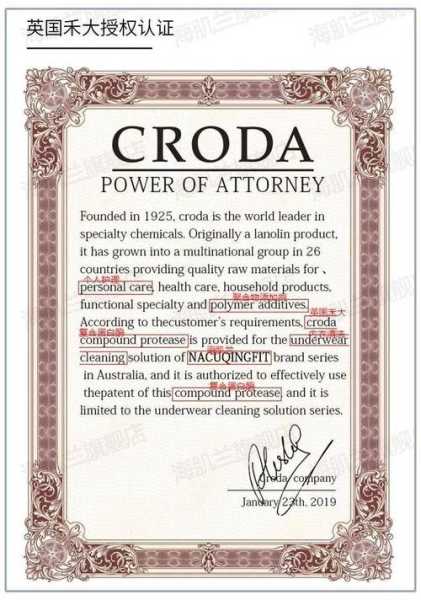This guide provides a template for drafting a professional litigation power of attorney in English. It outlines key components, including the principal's and attorney's details, scope of authority, and termination clauses, ensuring a legally sound document for managing litigation affairs.
Introduction:

When it comes to legal proceedings, especially in complex or lengthy litigation, having a litigation power of attorney can be invaluable. A litigation power of attorney is a legal document that authorizes an individual to act on behalf of another in legal matters, including representing them in court. Drafting a professional and comprehensive litigation power of attorney can be challenging, but with the right template, you can ensure that your document is clear, concise, and legally enforceable. In this article, we will provide you with a detailed English template for a litigation power of attorney, along with explanations and tips on how to use it effectively.
I. Introduction to the Litigation Power of Attorney
Before diving into the template, it is important to understand the purpose and scope of a litigation power of attorney. This document allows the principal (the person granting the authority) to appoint an agent (the person authorized to act on their behalf) to handle various legal matters, including:
- Communicating with attorneys and legal professionals
- Negotiating settlements
- Filing and responding to legal documents
- Representing the principal in court
- Making decisions regarding the case
It is crucial to note that a litigation power of attorney is different from a general power of attorney, which grants broader authority and can be used for a wide range of personal and financial matters.
II. The Litigation Power of Attorney Template
[Your Name]
[Your Address]
[City, State, Zip Code]
[Email Address]
[Phone Number]
[Date]
To Whom It May Concern:
I, [Principal's Full Name], hereby appoint [Agent's Full Name] as my attorney-in-fact to act on my behalf in all legal matters related to the following case(s):
[List of Case(s) and Their Corresponding Case Numbers]
The authority granted to [Agent's Full Name] is as follows:
1、To communicate with attorneys, legal professionals, and opposing counsel regarding the above-mentioned case(s).
2、To negotiate settlements and sign any agreements on my behalf.
3、To file and respond to legal documents, including but not limited to complaints, motions, and discovery requests.
4、To represent me in court and attend all necessary court appearances.
5、To make decisions regarding the above-mentioned case(s) as I would make them myself, provided that such decisions are within the scope of the law and do not conflict with my expressed wishes.
I hereby acknowledge that [Agent's Full Name] has been fully authorized to act on my behalf and that I have reviewed and agree to the terms of this litigation power of attorney.
This authority is granted for the duration of the case(s) listed above and shall terminate upon the resolution of the case(s) or upon my written revocation.
I understand that this document does not authorize [Agent's Full Name] to engage in any activity that would require a separate power of attorney or consent from me.
In the event of any dispute regarding the interpretation or enforcement of this litigation power of attorney, it shall be resolved by the courts of [Principal's State].
[Principal's Signature]
[Principal's Printed Name]
[Principal's Date of Birth]
[Agent's Full Name]
[Agent's Address]
[City, State, Zip Code]
[Email Address]
[Phone Number]
Acknowledgment of Receipt:
I, [Agent's Full Name], hereby acknowledge receipt of the litigation power of attorney executed by [Principal's Full Name] on this [Date]. I understand the scope of my authority and agree to act in accordance with the terms of this document.
[Agent's Signature]
[Agent's Printed Name]
[Agent's Date of Birth]
III. Tips for Using the Template
1、Personalize the Template: Make sure to fill in all the necessary information, including the principal's and agent's full names, addresses, contact details, and case information.
2、Review the Terms: Before signing the document, ensure that both the principal and the agent have thoroughly reviewed the terms and understand the scope of authority granted.
3、Consider Adding Specific Clauses: Depending on the case, you may want to include additional clauses, such as a confidentiality agreement or a provision that requires the agent to keep the principal informed about the case's progress.
4、Consult with an Attorney: While this template provides a general framework, it is always advisable to consult with a legal professional to ensure that the document meets your specific needs and complies with local laws.
5、Signatures and Notarization: Both the principal and the agent must sign the document, and it may be advisable to have it notarized to add an extra layer of legal validity.
Conclusion:
Drafting a professional litigation power of attorney can be a complex task, but by using this English template and following the provided tips, you can create a clear and enforceable document. Remember to consult with a legal professional to ensure that your litigation power of attorney is tailored to your specific case and complies with all applicable laws and regulations.
相关阅读:
1、Comprehensive English Template for Crafting a Personal Power of Attorney Letter
2、Ultimate English Template Guide for Effective Collection and Delegation Letters
3、Ultimate English Template for Brand Authorization and Commissioning Letters
4、Create Your Personal Power of Attorney: English Template Included
Ultimate Guide to Crafting a Professional Power of Attorney Letter: English Template Included
Mastering the Art of Writing a Professional Power of Attorney Letter: English Template Included
Mastering the Art of Writing a Professional Power of Attorney Letter: English Template Included
Mastering the Art of Writing a Professional Power of Attorney Letter: English Template Included











